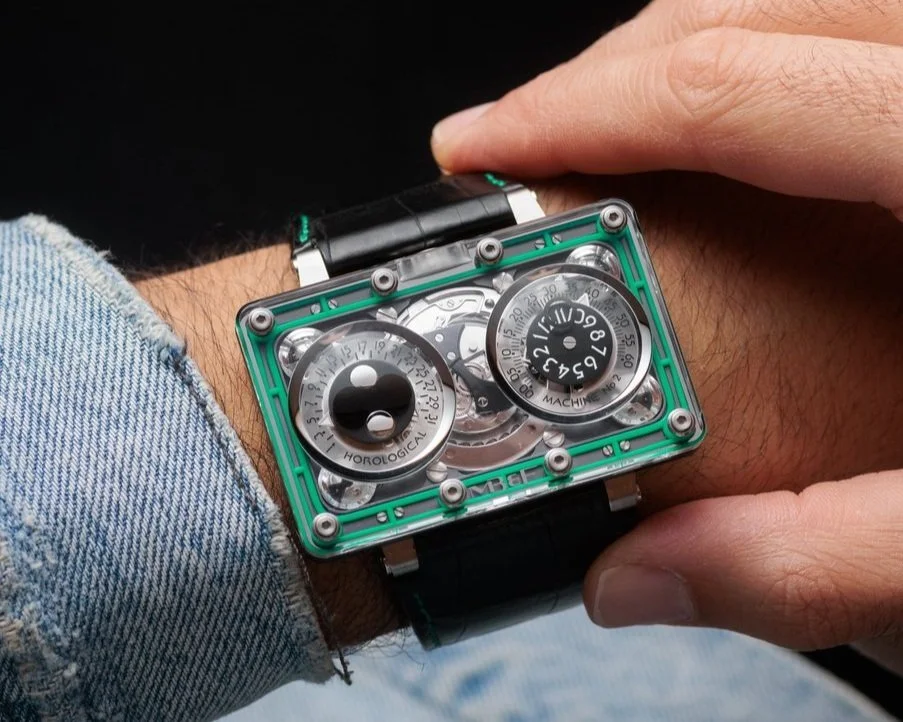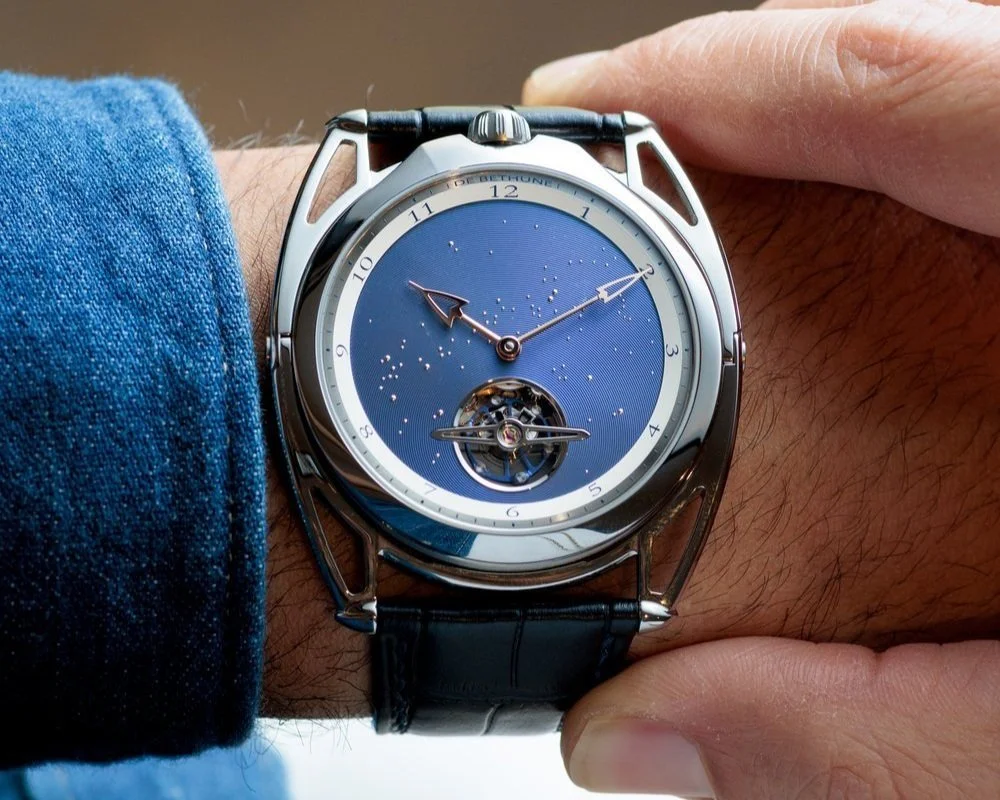Navigating Case Sizing in Independent Watchmaking
Whenever a watchmaking enthusiast wants to add a new timepiece to the collection, one of the primary questions that we receive is about case size. While the movement or dial may attract a collector, there’s nothing more important for day-to-day wear than the case. Everyone wants a new timepiece to fit their wrist nicely, and it’s ultimately the case along with a strap or bracelet that does that job.
With independent watchmaking, especially with modern, avant-garde timepieces, case sizing doesn’t fit classical rules. The fit of one of MB&F’s Horological Machines is simply a lot different than a traditional timepiece with a round case. Today, we’re digging into the basics of case sizing for modern indies and how to think through what will fit best on every wrist.
More than one way to measure
Something as seemingly straightforward as case size is actually an imperfect measurement, and here’s why. Whenever the case size is specified, it’s almost always the diameter of the case excluding the crown. Of course, that does give some idea of how the case will wear. But there are plenty of exceptions to big cases wearing small, and small cases wearing large. Anyone with familiarity with AP Royal Oaks will know that a 41mm case size wears significantly larger than expected. Specific to that timepiece, the 39mm wears more like how one would expect a 41mm to wear. This hinges less on the case and more on the design of the protruding lugs on Royal Oak steel bracelets. This is why lug-to-lug measurements are generally a much “safer” gauge of how a timepiece will fit.
For whatever reason, lug-to-lug measurements are not industry standard, even though they are the best gauge for how a timepiece will fit. When in doubt, ask for the lug-to-lug dimensions and go from there.
Avant-garde indie watches bend the rules
As we briefly touched on in the intro, the other thing with case sizing is that it’s easiest done when the case is a standard shape – round. In modern independent watchmaking, there are so many innovative case designs and shapes that sizing becomes much more difficult. Prime example, one of our favorite timepieces of all time, De Bethune’s DB28. The patented, articulated lugs on the DB28—an aspect that elevates this timepiece to modern icon in watchmaking—are very counterintuitive for understanding how this timepiece fits on the wrist.
Where typical watch lugs are fixed, the ingenuity of De Bethune brought about a spring-loaded mechanism that allows the lugs to move independently of the case. The end result is supreme comfort across a massive range of wrist sizes. In rough dimensions, the lug-to-lug variability ranges from 46mm, at its smallest, to 58mm, at its largest.
De Bethune’s DB28
Another example of a modern timepiece that defies the “eye test” for slim wearability is Urwerk’s UR-120. At quick glance, the unusual case shape and the sheer three-dimensionality of the dial lends one to believe this is a bulky timepiece. The reality is, the UR-120’s lug-to-lug dimensions are a mere 44mm. This is in large part due to the fact that Urwerk timepieces do not possess traditional lugs. Rather, the brand’s straps and bracelets are integrated into and hinge directly at the edge of the case. This cuts away what’s usually an additional 5-8mm where two sets of lugs are separate from the case, common on most round timepieces.
Especially with modern, avant-garde timepieces, there’s the need for an extra close look at the way lugs are positioned (under the case for the UR-120) and how they function (spring-loaded and adjustable with the DB28). There’s much more than meets the eye, especially when analyzing photos online, to understand how it will fit the wrist “in the metal.”
There’s no rule that can’t be broken
When it comes to how case size corresponds to wrist size for a good fit, there are some general guidelines that we would standby:
Lug-to-lug dimensions under ~50mm will fit nearly every wrist
Lug-to-lug dimensions over ~50mm will often protrude past the width of smaller wrists
Ultimately though, these rules can, and often are, broken. We know plenty of collectors that will wear whatever their heart desires, regardless of case size and fit. Generally, the trend is increasingly small and slim timepieces with the UR-120 as a great example of Urwerk’s evolving in the direction of streamlined designs. De Bethune has even released an extra-thin version of the DB28. But there is something exceptional about the heft of earlier timepieces from Urwerk, De Bethune, MB&F like Urwerk’s UR-210 “Full Metal Jacket.” These are timepieces that will not lose popularity due to the shift toward smaller case sizes in the industry.
When it comes to the most innovative timepieces in horology, there will always be more to think about when understanding how unusual and avant-garde cases translate to wearability. But when in doubt, lean on lug-to-lug dimensions and don’t hesitate to talk to other collectors and retailers of independent brands.



